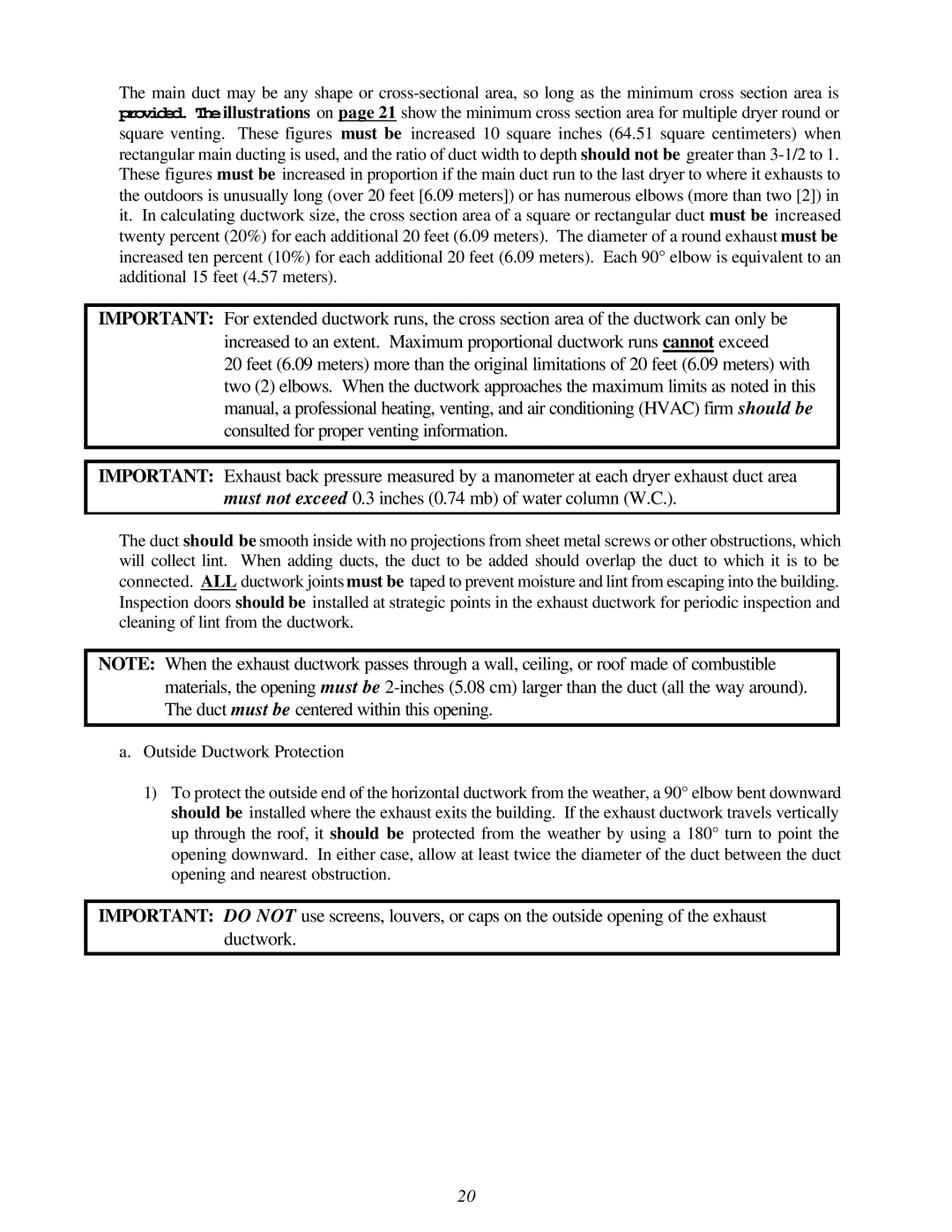
The main duct may be any shape or
IMPORTANT: For extended ductwork runs, the cross section area of the ductwork can only be increased to an extent. Maximum proportional ductwork runs cannot exceed
20 feet (6.09 meters) more than the original limitations of 20 feet (6.09 meters) with two (2) elbows. When the ductwork approaches the maximum limits as noted in this manual, a professional heating, venting, and air conditioning (HVAC) firm should be consulted for proper venting information.
IMPORTANT: Exhaust back pressure measured by a manometer at each dryer exhaust duct area
must not exceed 0.3 inches (0.74 mb) of water column (W.C.).
The duct should be smooth inside with no projections from sheet metal screws or other obstructions, which will collect lint. When adding ducts, the duct to be added should overlap the duct to which it is to be connected. ALL ductwork joints must be taped to prevent moisture and lint from escaping into the building. Inspection doors should be installed at strategic points in the exhaust ductwork for periodic inspection and cleaning of lint from the ductwork.
NOTE: When the exhaust ductwork passes through a wall, ceiling, or roof made of combustible materials, the opening must be
a.Outside Ductwork Protection
1)To protect the outside end of the horizontal ductwork from the weather, a 90° elbow bent downward should be installed where the exhaust exits the building. If the exhaust ductwork travels vertically up through the roof, it should be protected from the weather by using a 180° turn to point the opening downward. In either case, allow at least twice the diameter of the duct between the duct opening and nearest obstruction.
IMPORTANT: DO NOT use screens, louvers, or caps on the outside opening of the exhaust ductwork.
20
